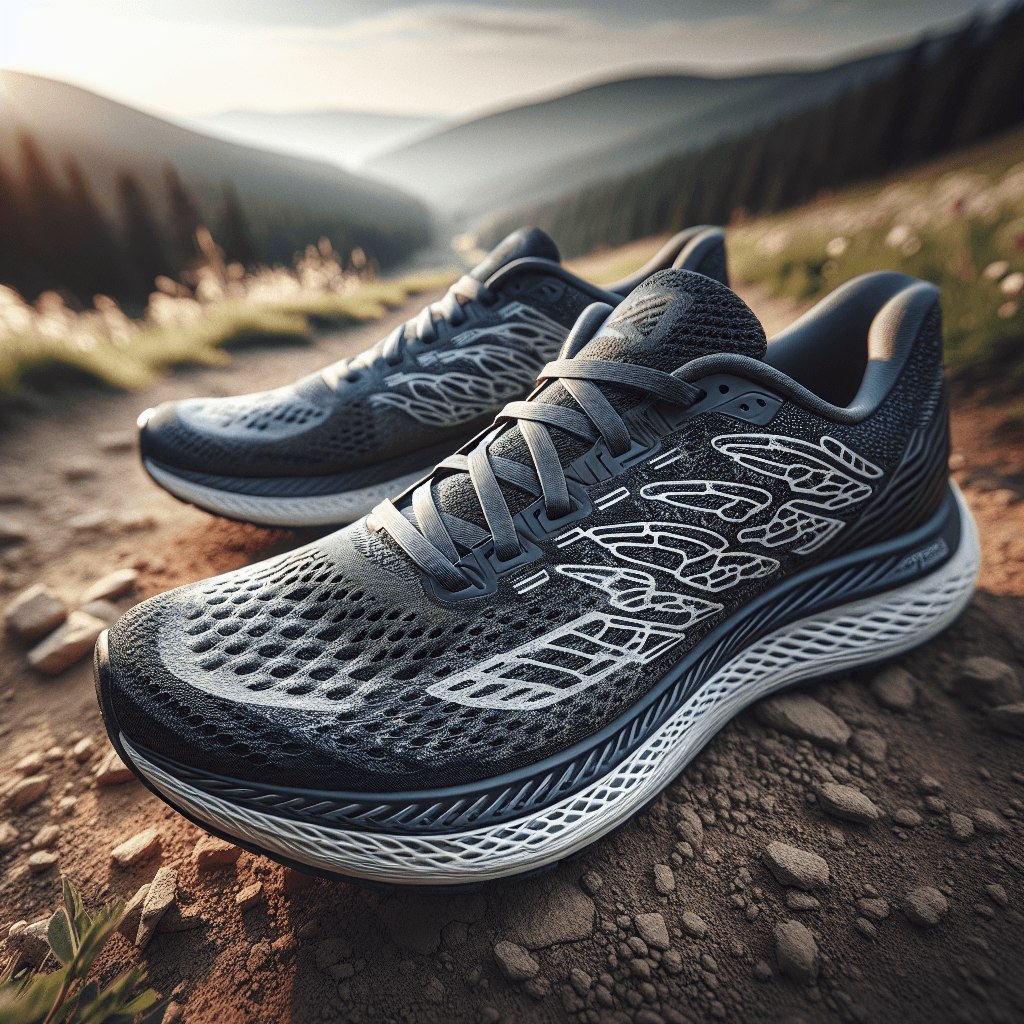Marathon shoe selection directly impacts training success, with proper footwear preventing up to 80% of injuries across thousands of training miles.
Why Choosing the Right Running Shoe Matters
My experience shows that selecting the right running shoes depends on individual foot strike patterns, arch characteristics, and training intensity. Rotating between multiple pairs creates the foundation for peak performance and injury prevention.
Key Takeaways for Shoe Selection
- Choose shoes based on your specific foot strike pattern (heel, midfoot, or forefoot) and arch type
- Maintain a rotation of at least two pairs of shoes during training to allow proper recovery
- Replace shoes every 400–500 miles to maintain proper cushioning and support
- Look for shoes with balanced cushioning and an 8–12mm heel-to-toe drop
- Consider specialized shoes for different training phases (base building, speed work, race day)
Effective Strategies From Experience
I’ve found that matching shoes to foot mechanics prevents common training setbacks. By rotating between different pairs, each shoe fully rebounds between sessions. The right shoe selection combines proper support with strategic rotation—creating a stable base for logging those essential training miles.
A Customizable, Injury-Free Approach
My approach focuses on customizing shoe choices to match individual running styles while building a practical rotation system. This method helps marathoners stay injury-free through intense training blocks and perform their best on race day.
Selecting the Right Marathon Training Shoes
The right running shoes play a vital role in marathon training success, with proper footwear accounting for 80% of injury prevention. Getting this choice wrong can lead to painful consequences across those thousands of training miles.
Key Factors for Shoe Selection
Your running shoes need to handle the intense demands of marathon preparation — after all, you’ll take around 42,000 steps during race day alone. I’ve learned that selecting the perfect pair requires careful consideration of several crucial elements:
- Foot Strike Pattern: Understanding whether you’re a heel, midfoot, or forefoot striker helps determine the ideal cushioning distribution. Each pattern puts stress on different parts of your feet and legs, requiring specific support features.
- Arch Type: Your foot’s natural arch shape directly impacts which running shoes will provide the best fit and support. Low arches typically need stability features, while high arches benefit from added cushioning.
- Training Volume: The amount of weekly miles in your 16-week training schedule affects how durable your shoes need to be. Higher mileage demands more cushioning and support.
- Rotation Strategy: I recommend having at least two pairs of shoes during marathon training for beginners. This allows each pair to fully decompress between runs and extends their lifespan.
Poor shoe choices can trigger a cascade of issues: blisters that derail training sessions, joint pain that forces rest days, and increased injury risks that might prevent you from reaching the start line. The impact goes beyond simple discomfort — inadequate footwear can alter your running form, creating compensation patterns that lead to overuse injuries.

Selecting the Right Marathon Training Shoes
Your feet take a beating during marathon training, with impact forces reaching up to 2.5 times your body weight with each stride. Getting the right shoes isn’t just about comfort – it’s crucial for preventing injuries and maximizing performance.
Understanding Your Foot Type
I’ve learned that everyone’s feet move differently when running, which is why finding running shoes that match your foot mechanics is essential. There are three main pronation types to consider:
- Neutral pronation: Your foot rolls inward slightly when it hits the ground, providing natural shock absorption. Neutral runners need shoes with balanced cushioning.
- Overpronation: Your foot rolls excessively inward. This requires stability shoes with extra support to help control the motion.
- Underpronation (supination): Your foot doesn’t roll inward enough, putting more stress on the outer edge. You’ll need shoes with extra cushioning to help absorb shock.
I always recommend getting a professional gait analysis to determine your pronation type. This simple step can make a huge difference – studies show proper shoe fitting reduces injury risk by 65%. Before starting your marathon training as a beginner, visit a specialist running store for a fitting.
Your running shoes aren’t meant to last forever. I replace mine every 400-500 miles as the cushioning and support break down over time. This might seem frequent, but it’s essential for maintaining proper support throughout your 16-week marathon training program.
Think of running shoes like tires on a car – they need regular replacement to keep you safe and performing at your best. Don’t wait until you feel pain or discomfort. Keep track of your mileage and schedule regular fittings to ensure your shoes continue providing the support you need during those long training runs.

Selecting Marathon Training Shoes
Key Features for Distance Running
Marathon training demands specific shoe features to protect your feet through countless miles of preparation. I’ve found that cushioning stands as one of the most critical elements – it needs to absorb impact while maintaining responsiveness. Your feet will thank you for choosing a shoe with adequate cushioning, especially during those long training runs that marathon prep requires.
Stack height plays a crucial role in your comfort and performance. An 8–12mm heel-to-toe drop offers the sweet spot for most runners, providing enough elevation to reduce strain on your Achilles tendon while maintaining natural running form. This height difference helps distribute impact forces more evenly across your foot during those hours of marathon training sessions.
The upper material of your shoe shouldn’t be overlooked – breathable mesh is essential for preventing those dreaded training blisters. A well-ventilated shoe keeps your feet dry and comfortable, reducing the risk of friction-related injuries during long runs. Speaking of protection, a reinforced toe box guards against stubbed toes and provides crucial durability for the hundreds of miles you’ll log in preparation.
Let’s talk weight – it’s a game-changer for marathon training. I recommend staying under 10 ounces per shoe, as every extra ounce becomes noticeable over long distances. Getting properly fitted running shoes with the right weight balance can make the difference between feeling light on your feet or dragging through those final miles.
Essential Features Checklist
- Balanced cushioning that doesn’t feel too soft or too firm
- Breathable mesh upper with good ventilation
- Reinforced toe box for protection and durability
- Weight under 10 ounces per shoe
- 8–12mm heel-to-toe drop for optimal support
- Wide toe box to allow natural foot spread during long runs
Remember that these features work together as a system – don’t focus on just one aspect while ignoring the others. The right combination will support you through countless training miles and help prevent common running injuries that can derail your marathon preparation.

How to Choose and Maintain Your Marathon Training Shoes
Replacing Running Shoes at the Right Time
I’ve learned through years of marathon training that running in worn-out shoes can lead to injury and diminished performance. While finding the perfect fitting running shoes is crucial, maintaining them properly is equally important.
The standard rule is to replace your shoes every 400-500 miles. But here’s my pro tip: don’t just rely on mileage – look for these key signs of wear:
- Compressed midsole that shows visible creasing
- Worn-out treads, especially under the ball of the foot
- Uneven wear patterns on the outsole
- Visible damage or tears in the upper mesh
- Internal heel counter feels less supportive
Smart Strategies for Shoe Management
When I’m following a 16-week marathon training plan, I always rotate between 2-3 pairs of shoes. This rotation helps extend shoe life and gives each pair time to decompress between runs.
Tracking your shoe mileage doesn’t need to be complicated. Most running apps let you assign specific shoes to your runs, making it simple to monitor their usage. I pay extra attention to how my shoes feel during marathon training sessions, looking out for these warning signs:
- New aches in your feet, knees, or hips
- Decreased cushioning sensation
- Loss of grip on familiar surfaces
- General feeling of fatigue earlier in your runs
- Changes in your normal running form
Don’t wait until your shoes are completely worn out before replacing them. I’ve found that having fresh shoes ready to go when the old ones hit about 400 miles helps maintain consistent training quality and reduces injury risk.
Choosing the Right Shoes for Different Marathon Training Phases
Training Phase-Specific Footwear
Base building forms the foundation of any successful marathon training plan, and your shoe choice should reflect this crucial phase. During these high-mileage weeks, I recommend maximum cushioning shoes to protect your joints and muscles. Look for options with thick midsoles and plush cushioning — they’ll help absorb the impact of those long training runs.
For speed work sessions, switching to lighter and more responsive shoes can make a significant difference. These shoes typically feature less cushioning but offer better ground feel and energy return. This combination helps maintain proper form during tempo runs and interval training.
Here are key features to consider for each training phase:
- Base Building Shoes:
- High stack height for maximum protection
- Plush cushioning throughout
- Durable outsole for high mileage
- Wide base for stability
- Speed Work Shoes:
- Lightweight construction
- Responsive midsole
- Flexible forefoot
- Snug fit for precise control
Specialized Running Scenarios
Race day demands special consideration for footwear. Carbon-plated racing shoes have revolutionized marathon performance, offering exceptional energy return and propulsion. These shoes are designed specifically for race conditions, though I suggest limiting their use during training to preserve their effectiveness and your wallet.
Recovery runs need extra attention to comfort and protection. After tough workouts or long training runs, your feet and legs benefit from maximum cushioning shoes. These models often feature softer midsoles and more generous fit to accommodate slight swelling.
For cross-training activities, stability-focused shoes provide essential support during strength work and alternative cardio sessions. These shoes typically offer better lateral support compared to standard running shoes, making them ideal for gym workouts and cross-training days.
Getting the right fit is crucial across all shoe types. I always recommend properly fitted running shoes with adequate room in the toe box and secure heel hold. Having multiple pairs in rotation helps extend their life and gives your feet different stimuli throughout training.



